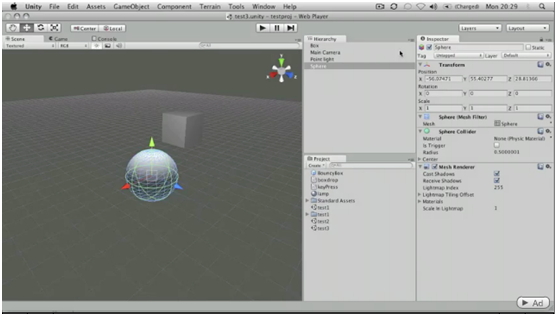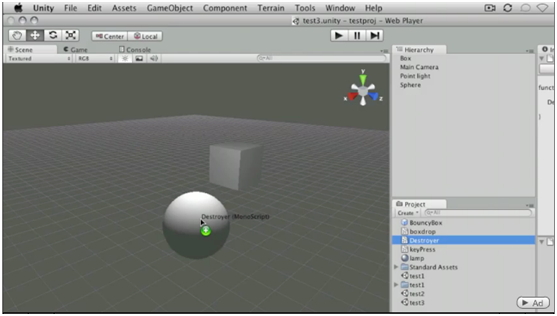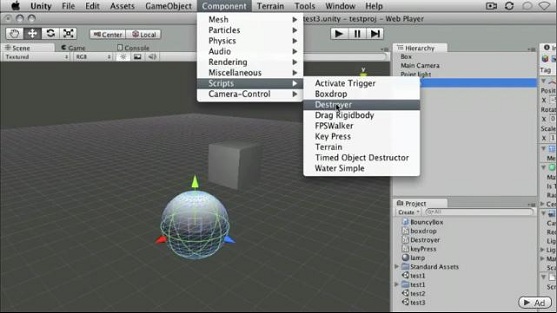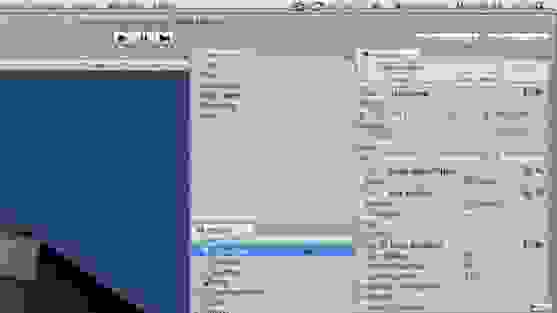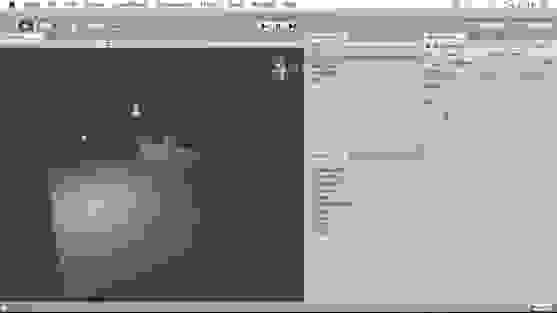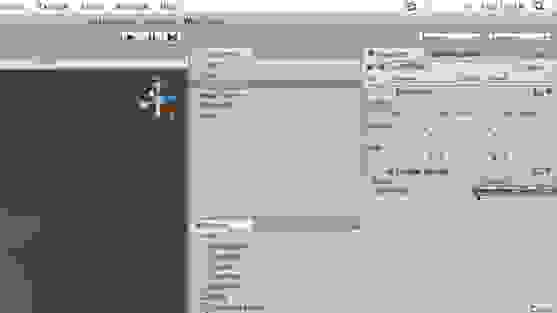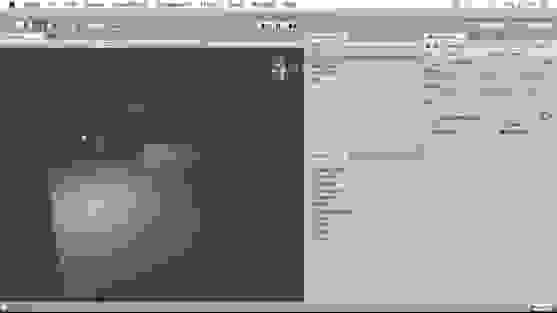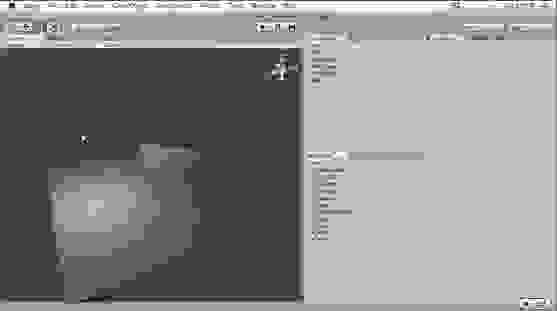Addforce unity что это
Rigidbody.AddForce
Успех!
Благодарим вас за то, что вы помогаете нам улучшить качество документации по Unity. Однако, мы не можем принять любой перевод. Мы проверяем каждый предложенный вами вариант перевода и принимаем его только если он соответствует оригиналу.
Ошибка внесения изменений
По определённым причинам предложенный вами перевод не может быть принят. Пожалуйста попробуйте снова через пару минут. И выражаем вам свою благодарность за то, что вы уделяете время, чтобы улучшить документацию по Unity.
Параметры
Описание
Добавляет крутящий момент к физическому телу.
Force is applied continuously along the direction of the force vector. Specifying the ForceMode mode allows the type of force to be changed to an Acceleration, Impulse or Velocity Change. Force can be applied only to an active Rigidbody. If a GameObject is inactive, AddForce has no effect.
By default the Rigidbody’s state is set to awake once a force is applied, unless the force is Vector3.zero.
This example applies a forward force to the GameObject’s Rigidbody.
Параметры
| x | Size of force along the world x-axis. |
| y | Size of force along the world y-axis. |
| z | Size of force along the world z-axis. |
| mode | Type of force to apply. |
Описание
Добавляет крутящий момент к физическому телу.
By default the Rigidbody’s state is set to awake once a force is applied, unless the force is Vector3.zero.
This example applies an Impulse force along the Z axis to the GameObject’s Rigidbody.
Unity RigidBody AddForce
Tips and Tricks: Unity RigidBody AddForce
Introduction
Unity Rigidbody AddForce is the recommended way to move GameObjects around the game world using physics. To use it properly you will need to have an understanding of what it is, how it works, and how to use it. AddForce is part of Unity’s physics system and is affected by other parts of the physics system including Mass, Drag, and Gravity. In this Tips and Tricks, we are going to demonstrate how all of these factors come into play and how you can start using Rigidbody.AddForce inside of your Unity Games.
What is Rigidbody AddForce
To understand what AddForce does, there is no better place to start than the Unity Documentation on Rigidbody.Addforce. Simply described, Unity states that AddForce “Adds a force to the Rigidbody”. This force is then used to move the GameObject. This is great for firing projectiles, launching vehicles, pushing away objects in an explosion, or moving characters. In short, AddForce adds velocity to your GameObjects.
AddForce vs Velocity
Conversely, we could just add velocity by stating Rigidbody.velocity = newVelocity. So, why even have AddForce? The difference between Rigidbody.AddForce and Rigidbody.velocity is how Unity performs the calculations for applying the physics. AddForce takes into account the GameObjects mass when simulating the physics of adding the velocity.
For example, imagine you are working on a game where you are shooting objects and need the objects to respond to the impact of the projectiles or explosions. If you add velocity to everything impacted by the projectile or shockwave, then a pebble will respond the same way a bus will and that would appear strange to the player. Now, if you use AddForce instead, then when the velocity is applied to the pebble it will move much further than something the size/weight of the bus.
How does Rigidbody.AddForce work?
Additionally, the Rigidbody component is what allows physics simulations to be run against your GameObjects. There are a few properties of rigidbodies that will affect the velocity of the GameObject one added. These are things like mass, drag, and gravity. These are constantly acting on the physical values of your objects without ever implementing any additional code or scripts. You can manipulate these values in the inspector.
If you use AddForce to apply an upward force on an object with a high gravity and mass, it will not move very far without applying a large amount of force. Similarly, if you are wanting to have an object launch forward, like an arrow fired from a bow, but maintain a high velocity then you can either again add more force or reduce the amount of drag. All of these are factors you must consider when designing your game.
How to Use Rigidbody.AddForce
Furthermore, the AddForce method accepts two parameters. The First being the force vector you wish to apply. Unity will apply this force continually towards the coordinates you supplied. Similarly, to adding velocity directly, the speed is determined by the coordinates in the given Vector. If a Vector3 of (10, 5, 0) is supplied, the object will move in a line through coordinates X 10, Y 5, Z0 and a speed of 10 X units and 5 Y units per second.
Second, is the mode at which you want the force applied to the object. The options are Force, Acceleration, Impulse, and VelocityChange. Force applies a constant force to the GameObject while considering its mass. Acceleration does the same as force but ignores the mass. Impulse applies all of the force at once, such as taking the shock from an explosion, while taking mass into consideration. Lastly, Velocity change does the same as impulse but again ignores the mass. The type of ForceMode you wish to apply all depends on the situation you want to use it for.
Since Unity Rigidbody AddForce is a physics simulation we will need to run any of our AddForce code inside of our FixedUpdate method, which is a Unity Lifecycle method. For more on Unity’s Lifecycle check out our article on FixedUpdate vs Update vs LateUpdate. FixedUpdate happens at regular set intervals that are independent of frame rate meaning when our updates happen things will not look choppy just because there was a change to our frame rate.
Rigidbody.AddForce Example
Now, let us set up a simple scene and script to experiment with Unity Rigidbody AddForce. You can create your own scene as you follow along or feel free to clone the repo for this Unity tutorial from our GitHub.
Rigidbody AddForce Script
Start by creating fields for a boolean, Rigidbody, Vector3, ForceMode, and a float. All these should be set to private for proper encapsulation and the Vector3, ForceMode, and float should be serialized for access inside the editor.
Inside of our Update method we will check for inputs on the UpArrow and escape key. If the UpArrow is clicked it will set our bool to true. If the escape key is pressed it will trigger a ReturnToCenter method to move our object back to center and remove any velocity that has been added.
Once our game is started and our script’s Start method is triggered, we will initialize our Rigidbody field by using GetComponent. Start is another of Unity’s lifecycle methods.
Lastly, inside of our FixedUpdate method, if our boolean is set to true then we will call AddForce on our Rigidbody using the parameters set in the inspector. Here is our full Rigidbody movement script.
AddForce Scene
For our scene, we have set up a cube with a Box Collider, Rigidbody, and our AddForceController script to run our experiments with. Also, we added a floor, to have something to land on, and a Cinemachine camera set to follow our cube, so we do not lose sight of our cube.
Playing with the Numbers
To start, set the Rigidbody Mass to 5 and the Drag to 2. For our AddForceController set the OurVector X = 0, Y = 10, and Z = 0. Also, set OurForceMode to Force in the dropdown and Thrust to 50.
We can also experiment with the effect Mass has on our Cube. Set the Mass to 10 and ForceMode to Force. Pressing Up will now cause the Cube to barely move. Set the ForceMode to Acceleration and the cube will launch to the same level it would if the Mass were 0, due to it ignoring the Mass property. The same can be seen when switching between Impulse and VelocityChange. Note that you will probably need to use the escape key to return the cube to center when using VelocityChange because it will take much longer to return to the floor.
Wrap Up
Now we have a good understanding of how Unity RigidBody AddForce affects the position of our objects and the impact of ForceMode on our velocity. Now, you can continue to experiment with the X, Y and Z coordinates to see what type of angles and movement you can get out of the simple script. These are values you can take and apply to all sorts of objects in your own game.
Rigidbody
class in UnityEngine
Success!
Thank you for helping us improve the quality of Unity Documentation. Although we cannot accept all submissions, we do read each suggested change from our users and will make updates where applicable.
Submission failed
For some reason your suggested change could not be submitted. Please try again in a few minutes. And thank you for taking the time to help us improve the quality of Unity Documentation.
Description
Control of an object’s position through physics simulation.
Adding a Rigidbody component to an object will put its motion under the control of Unity’s physics engine. Even without adding any code, a Rigidbody object will be pulled downward by gravity and will react to collisions with incoming objects if the right Collider component is also present.
The Rigidbody also has a scripting API that lets you apply forces to the object and control it in a physically realistic way. For example, a car’s behaviour can be specified in terms of the forces applied by the wheels. Given this information, the physics engine can handle most other aspects of the car’s motion, so it will accelerate realistically and respond correctly to collisions.
In a script, the FixedUpdate function is recommended as the place to apply forces and change Rigidbody settings (as opposed to Update, which is used for most other frame update tasks). The reason for this is that physics updates are carried out in measured time steps that don’t coincide with the frame update. FixedUpdate is called immediately before each physics update and so any changes made there will be processed directly.
Properties
| angularDrag | The angular drag of the object. |
| angularVelocity | The angular velocity vector of the rigidbody measured in radians per second. |
| centerOfMass | The center of mass relative to the transform’s origin. |
| collisionDetectionMode | The Rigidbody’s collision detection mode. |
| constraints | Controls which degrees of freedom are allowed for the simulation of this Rigidbody. |
| detectCollisions | Should collision detection be enabled? (By default always enabled). |
| drag | The drag of the object. |
| freezeRotation | Controls whether physics will change the rotation of the object. |
| inertiaTensor | The diagonal inertia tensor of mass relative to the center of mass. |
| inertiaTensorRotation | The rotation of the inertia tensor. |
| interpolation | Interpolation allows you to smooth out the effect of running physics at a fixed frame rate. |
| isKinematic | Controls whether physics affects the rigidbody. |
| mass | The mass of the rigidbody. |
| maxAngularVelocity | The maximimum angular velocity of the rigidbody measured in radians per second. (Default 7) range < 0, infinity >. |
| maxDepenetrationVelocity | Maximum velocity of a rigidbody when moving out of penetrating state. |
| position | The position of the rigidbody. |
| rotation | The rotation of the Rigidbody. |
| sleepThreshold | The mass-normalized energy threshold, below which objects start going to sleep. |
| solverIterations | The solverIterations determines how accurately Rigidbody joints and collision contacts are resolved. Overrides Physics.defaultSolverIterations. Must be positive. |
| solverVelocityIterations | The solverVelocityIterations affects how how accurately Rigidbody joints and collision contacts are resolved. Overrides Physics.defaultSolverVelocityIterations. Must be positive. |
| useGravity | Controls whether gravity affects this rigidbody. |
| velocity | The velocity vector of the rigidbody. It represents the rate of change of Rigidbody position. |
| worldCenterOfMass | The center of mass of the rigidbody in world space (Read Only). |
Public Methods
| AddExplosionForce | Applies a force to a rigidbody that simulates explosion effects. |
| AddForce | Adds a force to the Rigidbody. |
| AddForceAtPosition | Applies force at position. As a result this will apply a torque and force on the object. |
| AddRelativeForce | Adds a force to the rigidbody relative to its coordinate system. |
| AddRelativeTorque | Adds a torque to the rigidbody relative to its coordinate system. |
| AddTorque | Adds a torque to the rigidbody. |
| ClosestPointOnBounds | The closest point to the bounding box of the attached colliders. |
| GetPointVelocity | The velocity of the rigidbody at the point worldPoint in global space. |
| GetRelativePointVelocity | The velocity relative to the rigidbody at the point relativePoint. |
| IsSleeping | Is the rigidbody sleeping? |
| MovePosition | Moves the kinematic Rigidbody towards position. |
| MoveRotation | Rotates the rigidbody to rotation. |
| ResetCenterOfMass | Reset the center of mass of the rigidbody. |
| ResetInertiaTensor | Reset the inertia tensor value and rotation. |
| SetDensity | Sets the mass based on the attached colliders assuming a constant density. |
| Sleep | Forces a rigidbody to sleep at least one frame. |
| SweepTest | Tests if a rigidbody would collide with anything, if it was moved through the Scene. |
| SweepTestAll | Like Rigidbody.SweepTest, but returns all hits. |
| WakeUp | Forces a rigidbody to wake up. |
Messages
| OnCollisionEnter | OnCollisionEnter is called when this collider/rigidbody has begun touching another rigidbody/collider. |
| OnCollisionExit | OnCollisionExit is called when this collider/rigidbody has stopped touching another rigidbody/collider. |
| OnCollisionStay | OnCollisionStay is called once per frame for every collider/rigidbody that is touching rigidbody/collider. |
Inherited Members
Properties
| gameObject | The game object this component is attached to. A component is always attached to a game object. |
| tag | The tag of this game object. |
| transform | The Transform attached to this GameObject. |
| hideFlags | Should the object be hidden, saved with the Scene or modifiable by the user? |
| name | The name of the object. |
Public Methods
Static Methods
| Destroy | Removes a GameObject, component or asset. |
| DestroyImmediate | Destroys the object obj immediately. You are strongly recommended to use Destroy instead. |
| DontDestroyOnLoad | Do not destroy the target Object when loading a new Scene. |
| FindObjectOfType | Returns the first active loaded object of Type type. |
| FindObjectsOfType | Gets a list of all loaded objects of Type type. |
| Instantiate | Clones the object original and returns the clone. |
Operators
Is something described here not working as you expect it to? It might be a Known Issue. Please check with the Issue Tracker at issuetracker.unity3d.com.
Copyright ©2021 Unity Technologies. Publication Date: 2021-11-26.
Unity3d. Уроки от Unity 3D Student (B04-B08)
Предыдущие уроки вы можете найти в соответствующем топике.
Теперь в каждом посте в скобках (в конце) будут указываться номера уроков. Буква в начале номера обозначает раздел (B-Beginner, I — Intermediate).
PS: Если вы не проходили предыдущие уроки, очень рекомендую их пройти, т.к. последующие изредка на них ссылаются.
Базовый Урок 04 — Уничтожение объектов
В уроке рассказывается как удалять объекты со сцены, использую команду Destroy (уничтожить).
Создайте пустую сцену и добавьте в нее сферу (GameObject->Create Other->Sphere) и куб (GameObject->Create Other->Cube). Куб назовем “Box”. Расположите объекты как показано на рисунке ниже.
Добавьте C#-Скрипт (Project View->Create->C# Script) и назовите его Destroyer. Как уже говорилось, при создании C#-скрипта Unity создает некий каркас, состоящий из подключенных библиотек и основного класса (используемого скриптом) с методами Start() и Update(). В Базовом Уроке 02 (основы ввода) использовался метод Update(), который вызывается каждый кадр. В данном случае мы воспользуемся методом Start(), который выполняется сразу после загрузки сцены. Добавим в тело метода Start() функцию Destroy() и передадим в нее gameObject, указав таким образом, что скрипт должен уничтожить объект, компонентом которого он является:
Добавим скрипт к сфере. Сделать это можно несколькими путями. Перетащив скрипт из Project View на сферу в Scene View.
Или на имя объекта в Hierarchy.
Так же можно выбрать сферу и добавить скрипт через меню компонентов (Component->Scripts->Destroyer) или просто перетащив скрипт в Inspector View выбранного объекта.
Снова выберите сферу и убедитесь, что среди компонентов присутствует ваш скрипт.
Нажмите на Play и вы увидите, что сразу после загрузки сцены сфера исчезает.
Давайте теперь попробуем уничтожить другой объект. Для этого нам понадобится статический метод Find класса GameObject. Заменим код в методе Start() следующим:
Примечание от автора перевода: Обратите внимание, что во втором случае мы передаем значение, вызывая статическую функцию, поэтому пишем имя класса (GameObject — с большой буквы), в то время как в первом мы передаем объект этого класса (gameObject — с маленькой буквы). В противном случае компилятор выдаст ошибку:
error CS0176: Static member `UnityEngine.GameObject.Find(string)’ cannot be accessed with an instance reference, qualify it with a type name instead
что переводится как:
“статический член UnityEngine.GameObject.Find(string) не может быть доступен по ссылки экземпляра (класса), вместо этого определите (вызовите) его с именем типа.”
Сохраним изменения в коде скрипта. Скрипт не требуется убирать со сферы и добавлять к нашему кубу, т.к. назависимо от того, к какому объекту он теперь прикреплен, скрипт будет искать любой объект (на сцене) с именем Box. Нажмем Play и увидим как теперь сфера остается в сцене, а куб пропадает.
Что делать, если нам требуется уничтожить объект не сразу, а спустя какое-то время? Это можно сделать передав значение во 2ой параметр функции Destroy:
Нажмите Play и убедитесь, что куб изчезает через 3и секунды после того, как сцена целиком загрузится.
Дополнительные материалы:
Базовый Урок 05 — Реализация создание объектов
В уроке рассказывается как создавать объекты в сцене в реальном времени (runtime), используя префабы и команду Instantiate (инстанциирование)
Если вы хотите добавлять объекты на сцену, когда сцена уже загружена, то вам требуется использовать скрипты, а точнее команду Instantiate().
Загрузите сцену из Базового урока 03 (Префабы) или создайте такую же новую. В нашей сцене присутствует префаб BouncyBox.
Нажмите Play и убедитесь, что куб по-прежнему падает и отталкивается от поверхностей.
Теперь удалите со сцены экземпляр BouncyBox.
После этого добавьте пустой объект (напоминаю, GameObject->Create Empty или Ctrl + Shift + N в Windows, Cmd + Shift + N в MacOS). Расположите его примерно в том месте, где раньше был экземпляр BouncyBox.
Создадим C#-Скрипт и назовем его Creater. Начнем редактирование скрипта. Заведем открытую (public) переменную типа GameObject и назовем ее thePrefab. Модификатор public требуется указывать, если, например, вы хотите передавать значение переменной через Inspector View. После чего в теле функции Start() создадим еще один GameObject (с именем instance) и проинициализируем его значением с помощью статической функции Instantiate().
Рассмотрим метод Instantiate() подробнее.
Метод клонирует объект original с заданными вектором положения (position) и кватернионом поворота (rotation).
Тип Vector3 является обычным 3х компонентым вектором (аналогично вектору из R 3 ).
Тип Quaternion — кватернион, задающий поворот объекта.
Добавьте скрипт к пустому объекту (c именем GameObject).Напоминаю, поскольку thePrefab объявлен с модификатором public, вы можете задавать его начальное значение прямо в Inspector View (у соответствующего компонента, то есть в нашем случае это Creator у GameObject’а). Перетащите наш префаб в место указания значения (или выберете его из списка, кликнув на кружок справа).
Нажмем Play и увидим, что на сцене появился наш прыгающий кубик.
Но наш кубик прыгает просто вверх и вниз, потому что не имеет начального угла поворота. Выберите GameObject и поверните его под небольшим углом.
Теперь, нажав Play, вы увидите, что кубик падает и отталкивается под различными углами.
Дополнительные материалы:
Базовый Урок 06 — Простой таймер
В данном уроке рассказывается как в Unit при помощи скриптов
создавать простой таймер, используя Time.deltaTime и переменную типа float.
Воспользуемся сценой из предыдущего урока (с пустым игровым объектом,
генерирующим экземпляры префаба, т.е. BouncyBox).
Создадим С#-скрипт и назовем его Timer. Добавим переменную myTimer, и напишем следующий код.
Сохраняем скрипт и переключаемся назад в Unity. Добавим скрипт к объекту GameObject.
Напомню, т.к. myTimer объявлена открытой (public), то в Inspector View вы можете менять ее начальное значение.
Жмем Play. Как только значение myTimer упадет до нуля, в статус баре вы увидите строку GAME OVER. Значение переменной myTimer будет продолжать опускаться (это можно увидеть в Inspector View).
Для того, чтобы переменная myTimer не опускалась ниже нуля, добавим еще одно ветвление в функцию Update(), в итоге мы получаем следующий код:
Нажмем Play и проследим за поведением переменной myTimer. Когда ее значение будет достаточно близким к нулю, то оно перестанет изменяться.
Дополнительные материалы:
Базовый Урок 07 — Основы движения
В уроке рассказывается, как двигать объекты c помощью функции transform.Translate.
Создадим сцену с кубом, камерой и источником света.
Создадим новый C#-скрипт и назовем его Move.
Поскольку движение должно быть непрерывно во времени, то основной код будет располагаться в методе Update(). Вызовем функцию Translate, объекта transform и передадим ей в качестве параметра Vector3(0, 0, 1). Получим следующий код:
Разберемся подробнее в коде. Тут transform — это объект класса Transform, привязанный к нашему объекту. Метод Translate() двигает объект вдоль вектора на расстояние равное его длине (параллельный перенос).
Сохраним наш скрипт и добавим его к нашему кубу. Нажмите Play и увидите как куб стремительно улетает вдоль оси Oz.
Давайте уменьшим скорость движения, например, умножив наш вектор на Time.deltaTime, то есть:
Нажмите Play и убедитесь, что куб начинает двигаться заметно медленнее.
Можно сделать наш скрипт более удобным в использовании, если скорость задать не фиксированным вектором, а через переменную. Заведем public переменную типа float и назовем ее speed. С помощью этой переменной можно будет задавать начальную скорость через Inspector View (по умолчанию она будет равна 5.0f):
Сохраним скрипт и убедимся, что в Inspector View у компонента Move появилась переменная Speed.
Посмотрите, как будет меняться скорость движения нашего объекта в соответствии с заданным начальным значением этой переменной. Например, при Speed = 3 скорость объекта не очень быстрая, но и не медленная.
Примечение: Для выражения Vector3(0.0f, 0.0f, 1.0f) существует короткая (но видимо чуть более медленная, если не прав, прошу поправить) запись Vector3.forward.
Кусок кода из обертки:
Дополнительные материалы:
Базовый Урок 08 — Основы движения с помощью силы.
В уроке рассказывается как c помощью приложения силы двигать физическое тело (Rigidbody).
Если у вас на сцене есть объект с компонентом Rigidbody, то нужно задавать ему движение с помощью приложения силы (передав таким образом все расчеты движения физическому движку игры). В противном случае вы можете начать конфликтовать с физикой объекта. Мы по-прежнему используем сцену из Базового урока 03.
Создадим C#-скрипт и назовем его Force. В методе Start() вызовем метод AddForce() компонента rigidbody (cвязанного с нашим объектом) и передадим ему вектор приложенной силы Vector3(0.0f, 0.0f, power). В классе заведем переменную типа float с именем power и значением, по умолчанию равным 500.0f:
Сохраним скрипт и добавим его к нашему объекту (или префабу). Теперь, если нажать Play, вы увидите как куб падает не вниз а под углом, из-за воздействия силы приложенной вдоль оси Oz.

